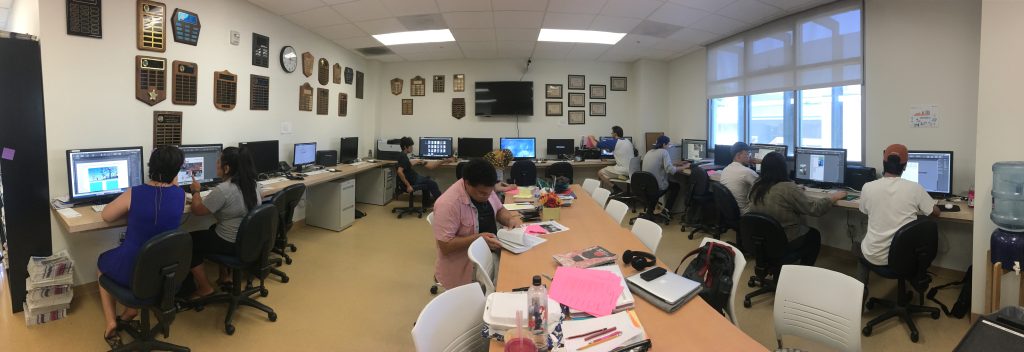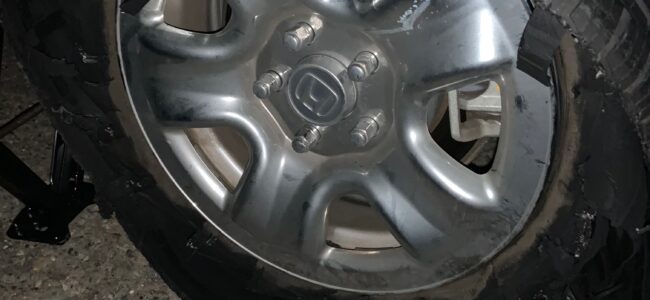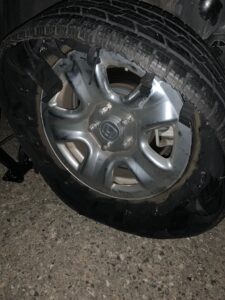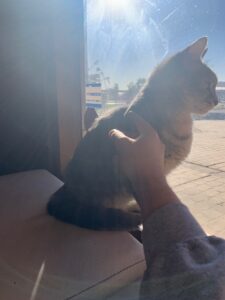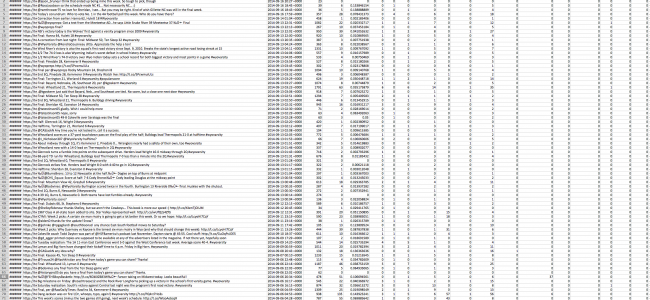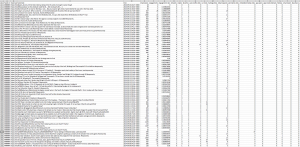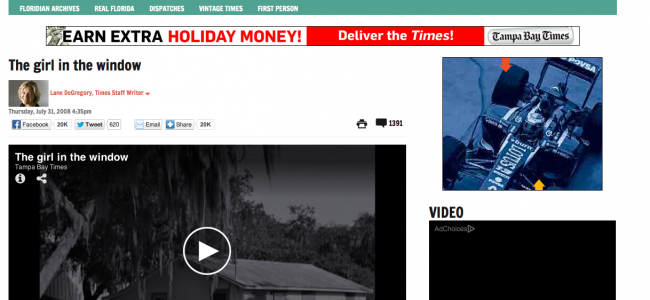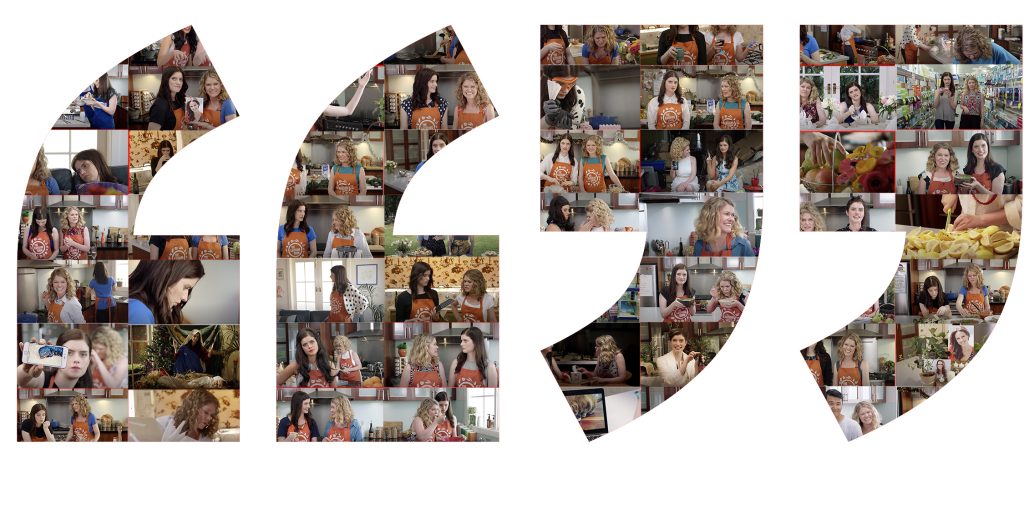
“The Katering Show” had been out for almost a year before one of our friends introduced it to me and my wife.
The web series on YouTube made by two Australian comediennes, one with food intolerances and one with a glorious lack of awareness, seemed to speak directly to us. At that point, in late 2015, I had been fighting with food intolerance for more than six years. Doctors provided no guidance on why I was getting sick after basically every meal. After a few months I diagnosed myself with lactose intolerance; however, it took another year before I realized that I also had fructose intolerance, which meant I needed to avoid wheat, corn, soy, many fruits and vegetables and a thousand other delights that I previously loved but now gave me explosive diarrhea. My physical health went awry for about two years while I tried to make sense of what was happening to my body.
It took lots of trial and error before I developed a diet that made sense. The struggle, as they say, was real.
In late 2015, when “The Katering Show” came our way, working around my food intolerances was a three-times-a-day eggshell walk. If I tried a new food, I’d better be near a bathroom. I carried three kinds of pills with me everywhere I went — spectrum pills to help with digestion, and both gas and anti-diarrheal pills to help with any unanticipated after-effects of a poorly planned food choice.
“The Katering Show” took all that fear and uncertainty and frustration and gave it a voice. And they made it funny, too.
Kate McCartney (the food intolerant) and Kate McLennan (the awareness challenged) became the voice track to my life I never knew I needed. To date, we’ve probably watched the entire series of episodes — the first season of six episodes from 2015 and the second season of eight episodes from 2017 — at least 50 times. We’ll sometimes watch it as we fall asleep at night. Our most recent rewatch ended Thursday.
But the appreciation for the show doesn’t stop when we stop watching.
Quotes from the show, not just on food intolerance but on all the little moments surrounding it, slowly worked their way into the everyday vocabulary of both me and my wife. This list is a compilation of those quotes — 70 little sayings that my wife and I share on a regular basis. (If you think it’s unreasonable that my wife and I could honestly quote 70 lines from this series back and forth to each other at a regular-enough interval to make a list like this possible, well… I feel sorry for you.)
Keep in mind, though, that this is NOT a compilation of the best quotes from each episode. These are the quotes that my wife and I say to each other often enough to be instantly recognizable for both of us. If I had to guess, I think we average somewhere in the neighborhood of 5-10 “The Katering Show” references PER DAY in our house. This list tries to account for all of the ones that we’ve worked into our day-to-day lives.
Here are the episodes, ranked by the number of quotes we use from that episode in our daily conversations.
14. Season 2, Episode 8, “End of Days” (1 quote)
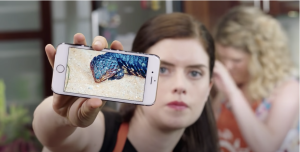
Quotable quote of the episode: 7:00: ” … Call it Steve.”
It’s too bad the series finale doesn’t have more quotable lines, because it has some of the best storylines and acting of all 14 episodes. However, this episode did change forever the names by which we call every lizard we ever see, ever. They’re all named Steve.
13. Season 2, Episode 2, “Yummy Mummies” (2 quotes)
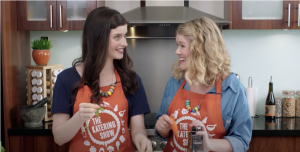
Quotable quote of the episode: 5:31: “What a little cunt.”
This is without a doubt the most transgressive episode of “The Katering Show,” and I love it for that. And if you look at the view totals of the first three episodes of season 2, a lot of people stopped at this episode — and that’s a shame. This episode gave my wife and I an excuse to use the c-word; my wife says this line way more often than I do, and we mostly direct it at one of our cats. But our cats are jerks, so we use this one often.
Others from this episode (by the way, click on the time stamps for any of these quotes for a screenshot of that moment):
6:04: “Don’t need it!”
Tied-10. Season 1, Episode 1, “Mexicana Festiana” (3 quotes)
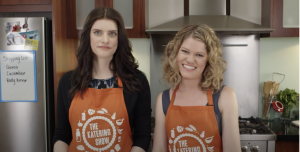
Quotable quote of the episode: 2:46: “Here, in my recently renovated kitchen.”
We recently renovated our kitchen. So… yeah, we say this a lot.
Others:
0:53: “Cream. Cheese. Cream cheese.” (Whenever we handle cheese, or cream, or cream cheese, we say this.)
1:00: “Keep? What do you mean ‘Keep’?”
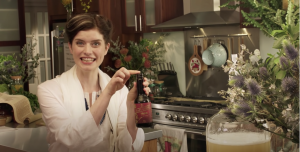
Quotable quote of the episode: 6:29: ” … it has a lid …”
Literally any time we use anything that has a lid, we say this to each other. It’s the way McCartney says “lid” with an affected, high-pitched lilt that makes it so memorable and quotable.
Others:
8:05: “So many lemons.” (Whenever we see more than one lemon, we say this.)
10:38: “Should be a teacher. Teacher!” (As a teacher, this rings true…)
Tied-10. Season 2, Episode 7, “Chienging Flavours” (3 quotes)
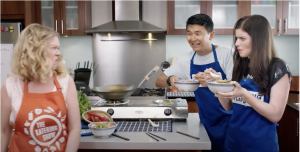
Quotable quote of the episode: 7:17: “Fuck you! Who the fuck do you think you are?”
This is definitely one of the most quoted lines from “The Katering Show” said in our house, a contender for the unofficial title of “most quoted line of the series.” We say it almost daily — sometimes to each other, sometimes just in conversation. And, of course, when we say it, we say it just like McLennan in her Australian fury: “Faak yew! Who tha faak do yew think yew-ahh?”
Others:
2:38: “Sambal, pronounced sam-bal…” (Any time we put any kind of red-ish or hot-ish sauce on anything, we say this. It could be Tabasco. Salsa. Ketchup. Doesn’t matter.)
7:30: “It’s the lime.” “It’s everything.” (We have burritos from our favorite burrito place, and they come with limes. And when we eat them, we HAVE to repeat this line. If one of us doesn’t, the other will.)
Tied-8. Season 1, Episode 5, “Food Porn” (4 quotes)
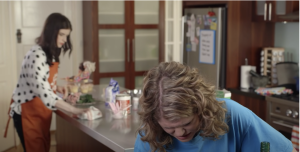
Quotable quote of the episode: 5:46: “I’m not doing good, mate. I’m not doing good at all.”
Any time any one of us isn’t feeling tip-top, we say this. McLennan says it after drinking too much. We say it then, but we also say it when we’ve got a headache, when our shoulders are tense, when we’ve eaten too much, when we stub our toes, when we get a paper cut. We’d probably say it in the aftermath of a serious car wreck, too, if we were conscious.
Others:
0:49: “… waiting for 11 likes that never fucking come.”
3:07: “You alright, mate?” (In our house, this often precedes “I’m not doing good, mate.”)
4:16: “Because she was a nehhd.” (My wife calls me a nehhd, with the accent, any time I say something nerdy. It’s cute.)
Tied-8. Season 2, Episode 6, “Tying the Not” (4 quotes)
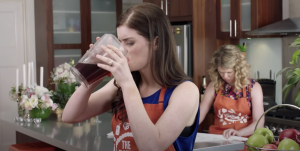
Quotable quote of the episode: 7:21: “I’m done!”
Of course, this must be said with the accent — it comes out like “I’m daahn!” in Australian. We use this pretty much any time we’re finished with anything and the result is not what we would have hoped, or when we quit something just because we’re over it — much like McCartney and marriage.
Others:
5:58: “Now where is that dill? Where’s that dill, guys? Does anyone know where that… where’s… where’s it… where’s it gone?” (If you watch this episode, you know this is a great cover for when a conversation turns awkward. We use it then. But we also use it any time we’re dealing with more than one spice in a recipe.)
8:25: “Good luck, you heteronormative piece of shit.” (This is a fun one to say to each other in our heterosexual marriage. Because, how do you come back from that? You don’t. It’s the ultimate insult ender. It’s also fun to call out heteronormativity to each other when we see it in public.)
9:49: “… Get oily.” (The context of this one makes it hilarious to say when you just, say, take olive oil out of the cupboard.)
Tied-5. Season 2, Episode 4, “The Body Issue” (5 quotes)
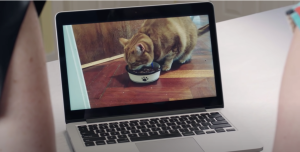
Quotable quote of the episode: 5:47: “Wow, she’s really going for it.” … “We’ll chat to you soon, Beans! Slow down, mate!” “Chew! She’s really opening her throat up, isn’t she?”
We have two cats who love to eat but don’t really love to chew, much like the cat Beans in this episode. So it’s almost a daily occurrence that we will tell our cats: “Slow down, mate! Chew!” They don’t listen, because they’re cats.
Others:
4:15: “Food liquid!”
4:58: “I’ll be a’right.” (We actually say this a ton, with the accent of course. It handily comes up useful in a ton of everyday situations — we just get to respond in character thanks to this episode.)
6:18: “It tastes a bit boney, and a bit deathy!”
8:23: “My mom had to take my baby to Geelong, just to give me a little bit of a break.” (This series, and this line specifically, has created a bit of an obsession in our house with Geelong. We discovered their AFL team, the Cats, and since then my wife has bought a Geelong Cats shirt, and we’ve started making plans to go to Australia and go specifically to Melbourne instead of Sydney so we could go see a Cats game. My Reddit avatar is also dressed in Geelong Cats gear. Who knew it’d come to this, just from one line in a web series?)
Tied-5. Season 2, Episode 1, “Red Ramen” (5 quotes)
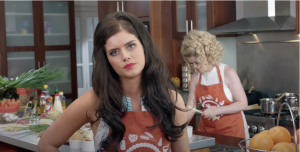
Quotable quote of the episode: 7:27: “Mate…”
It’s the range of emotions in McCartney’s voice that makes this so memorable. It’s a single word that starts as frustration, turns to pity, then sadness, all in the span of one syllable. And we try to emulate it as often as we can whenever things go wrong in our lives and we want to display a broad range of feelings all at once. I forgot to move laundry into the dryer? “Mate…” The pizza dough is too sticky? “Mate…” We bought the wrong size lid for our crock pot to replace the broken one? “Mate…”
A very close second was 9:20: “You know, like, red ramen? Red ramen?” “OK.” (McLennan’s dismissive yet upbeat “OK” here when she doesn’t understand something was a SERIOUS contender for not only quote of the episode, but quote of the series. My wife and I have shared hobbies but also many separate ones; when we can’t stop talking about one of our favorite topics in our hobbies, we’ll finish a sentence, and the other one will look at them and just say, “OK,” in McLennan’s dismissive tone, that says, “Good for you, but I don’t understand a word you just said.”)
Others:
1:53: “I’m just stressed. You’re just stressed.”
2:40: ” … a sassy swipe…” (Often said to our cats when they’re play fighting with each other.)
3:33: “Music festivals!” “Yeah, music festivals.” (Often said around Coachella time here in Southern California.)
Tied-5. Season 1, Episode 6, “Christmas” (5 quotes)

Quotable quote of the episode: 4:33: ” … if you want me to just spray (extended censored) and all over the mistletoe.”
This episode might be the absolute best for clarifying what, exactly, it feels like to have food intolerances. To that end, nothing encapsulates the feeling in the intestines of a food-intolerant person quite like this sentence. Whenever I’d eat something that would bring on an attack from my largely ornamental gut (see below), this is exactly how it felt — like my anus was holding back a spray gun that, unless addressed immediately and carefully, could spray (extended censored) and, yeah, it’d probably hit the mistletoe. Graphic, yes. But true? Also yes. And McCartney’s long-bleeped version creates exactly the kind of discomfort that should be conveyed when discussing this kind of stuff.
Goes well with 2:38: “… largely ornamental gut…” (This is EXACTLY how having food intolerances felt, and I appreciate this duo putting words to it. The rest of my body was fine; my gut almost had this weird halo of both trouble and obsolecence around it. And whenever I would discuss foods with anyone, but particularly with my wife, we’d have to figure out whether the food would destroy that “largely ornamental gut” of mine. And what better way to express that than with this wonderful three-word phrase?)
Others:
0:21: “Off you pop, mate.” (As my wife says to me as I fall asleep on the couch, again.)
2:45: “… which doesn’t sound like it’s going to work.” (Said any time we substitute a tasty food for a safe food.)
4:43: “I’ll just have a salad.” (It’s absurd to me that the two phrases that might best encapsulate living with food intolerances (this one, and the mistletoe one) come just 10 seconds apart in this episode. “I’ll just have a salad” is a phrase that I’ve uttered time and time again when eating out — and the food intolerant among us all know the dressing has to come on the side, too.)
Tied-3. Season 2, Episode 3, “It Gets Feta” (7 quotes)
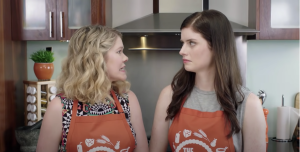
Quotable quote of the episode: 3:12: “GOUDA is a type of CHEESE.”
Giving up dairy to accommodate food intolerances was one of the more difficult things to do in transitioning from a normal-person diet to a diet centered on not shitting your pants that day. This episode drives that idea home so well, and this dismissive line — you don’t get the joke because you don’t eat this food — is a beautiful way to point out when a joke fails. It’s also just fun to say whenever you’re around any cheese at all, not just gouda, which is what we do in our house.
Others:
0:32: “These things, this thing, probably this fucking thing…” “Yeah alright, mate! Oh yeah, no, I can’t eat that.”
0:40: “So, you know, what’s the fucking point?”
1:39: “… a Rorschach-style poo explosion…” (The lines said during the laps in the drugstore aisle are some of the best lines of “The Katering Show,” and we’ve incorporated these three into our conversations. The first two minutes of this episode are what I might show to someone who’s never seen the show before; if they laugh at these moments as they should, then they should watch the rest of the series. If they don’t, well, don’t watch — and I’m not sure we’ll be able to be friends anymore.)
4:49-plus: “That was Bailey’s Irish Cream!” (The sight of McCartney Shaqing a glass of Bailey’s is beautifully hilarious. And since Bailey’s is among my wife’s favorites, we’ll say it just like in this episode — always with the arm shrug.)
5:20: “Mmmm. Al dente. Soft teeth.” (It’s a line that makes absolutely no sense. And yet, do we say it every time we make pasta, no matter how it turns out? Yep.)
6:19: “So you didn’t shit your pants on a bus in front of children and nuns.” (I don’t know why my wife loves saying this to me as I either step in or step out of the bathroom for an extended sit, but she does.)
Tied-3. Season 1, Episode 4, “Thermomix” (7 quotes)
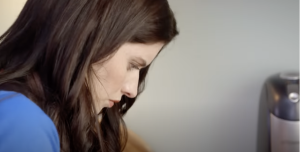
Quotable quote of the episode: 3:52: ” … some shit, and some other shit. And a bit of… who the fuck cares? I don’t know. I don’t care. I fucking hate cooking.”
With 2.8 million views on YouTube as of the time of this post, the “Thermomix” episode is still, by far, the most watched episode of “The Katering Show.” The amount of beautifully executed moments in this episode makes it a clear frontrunner for best episode of the series. For us, the best quote among those moments is this one, where McCartney just loses track of caring and stops trying completely. Whenever that happens to us in our lives, we just dribble out the words “some shit, and some shit.” We know EXACTLY what the other person means. And then it’s the other’s responsibility to finish the conversation with the four words necessary to do so: “I fucking hate cooking.” Then we can move on with life and put whatever it is behind us.
Others:
2:08: “I literally don’t have an opinion on this.” (One of my favorite phrases of the series is this emotionless one right here. It sums up the bulk of my thoughts throughout any single day, and it helps remind me that, no, I don’t have to have an opinion on something. It can just be. Philosophy 101, in a single deadpan sentence.)
2:18: “Hot wet rice!” (Somehow, everything we cook in our kitchen gets called “hot wet rice” at some point, even if it’s not even close to risotto.)
2:33: “… skills, and a kitchen!” (Pride goeth before a fall.)
5:22: “… it would firebomb my guts.” (Often said — repeatedly — while looking at a restaurant menu.)
6:00: “I would, but I’ve just got to, um, Internet, so…” (Oh, the dismissiveness is *chef’s kiss* perfect. And it’s exactly the right thing to say to a spouse when you realize you’re being dismissive, to both acknowledge and apologize for your own dismissiveness, before getting up off your ass and helping.)
8:21: “Ehhhh!” (Australian Fonzie approves. We mimic this over-the-top celebratory cry any time we have an achievement in our lives that’s equivalent to drying a tea towel.)
2. Season 1, Episode 2, “Ethical Eating” (7.5 quotes)
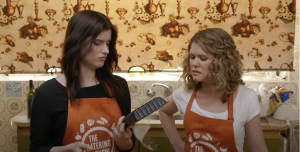
Quotable quote of the episode: 3:23: “No?” (with the accent)
The final two episodes are where it gets genuinely hard to choose which quote is the one we use the most in our house. All 7-8 of these quotes (the last two are almost always said together, so we meld them together to be one) are things we say to each other on a weekly basis. But I went with this one because, of all the quotes in this series, this may be the one we say most often to each other. The accent with which it’s said, though, puts it over the top — the Australian “No” that can carry a hidden “r,” the ability to get at least three distinct notes out of one syllable, the mix of confusion and frustration make this an all-timer, something said multiple times a day around our house. It’s also a reminder that a huge part of the appeal of this show is the accents. This particular word, with this particular emotion behind it, is somehow only funny in Australian, as is the case for many of the lines from this series. The fact that we can throw on the same accent, albeit not to the same degree of authenticity, helps separate this single word from all the others not only in this episode, but in this series.
Others:
1:59: “And behind the oven is my cat Beans! She’s my best friend.” “I thought I was your best friend.”
3:46: “But, you know, that’s what I’m dealing with.”
4:39: “Get rid of the box! Get rid of the box!” (As said upon any Amazon arrival, ever.)
5:22: “Turn up the dial to 2. It’s exciting, isn’t it!” “Yeah, could explode in your face!” (My wife and I make something we call Italian Eggs as part of our normal dinner rotation. In the middle of the recipe, we have to change the temperature on the stovetop burner from 5 to 6. Nevertheless, every time we change the temperature, we’re “turning the dial to 2.” Then the other one of us is required to respond, “could explode in your face.” Every. Time.)
6:56: “Ugh, that’s gone bad. Much like your career–“ (Whenever anything tastes or smells bad, under any context or circumstance, this comes out of one of our mouths.)
8:24: “So clever.” … and 8:43: “Well done.” (Again, the accent is key here to making these lines work so well. In the episode, they’re said of McCartney’s cat Beans; in our lives, we say them to our cats, but we also say them to each other — sometimes jokingly, sometimes seriously, always with the accent.)
1. Season 1, Episode 3, “We Quit Sugar” (11 quotes)
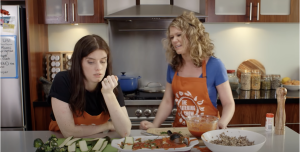
Quotable quote of the episode: 3:36: “Oh for fuck’s sake!”
The amount of quotable lines in this episode is almost off the charts — I mean, 11 from a SINGLE episode that we’ve worked into our vernacular? Yet of all the quotes of ALL episodes, not just “We Quit Sugar,” this one sticks out as the one we say the most. And that’s saying something, considering all of the quotes we repeat. What better way to express frustration over all the quibbles in life, everything from forgetting to turn the oven on to, oh, losing your job?
This episode alone has several lines we quote regularly, including these three absolute classics that might have been the quote of the episode if they were in any other episode:
3:27: ” … just to give it SOME flavor.” (As we say any time we season any food with anything. And it’s flav-ah, because, Australia.)
4:13: ” … which is fucking bullshit, Sarah!” (Whenever something is bullshit, it’s no longer just bullshit in our house. It’s bullshit, SARAH! It’s always Sarah’s fault now. Which is fun.)
5:16: “Oh God, I’m so tired.” “I’m so tired, you guys.” (A straight-up contender for quote of the series right here, “so tired you guys” is something we say to each other almost every day. When one of us is ready for bed, all we have to do is drop those four words into conversation, and we know exactly what it means. Or if I say it in the early afternoon, my wife knows I’ll be taking a nap soon, whether I want to or not. And sometimes we just say it after a long, hard day at work when we just want to collapse like a Sim but we can’t because we are adults and adults have responsibilities. “So tired you guys” covers it all.)
Others:
0:42: “Wow. That has just gone everywhere, hasn’t it?” (Anytime either one of us unintentionally drops something on the floor, the other one is required to say this line. Failure to do so is grounds for divorce.)
1:28: “Sarah Wilson.” (Always whispered. Never at an expected time. Always a smile.)
1:40: “She has rich girl hair.” “And Photoshop skin.”
2:02: “Apples!” (Just like with lemons, any time we see more than one apple, it’s “Apples!” With the accent.)
2:48: “Yes. Right. Quinoa.” (This one has taken on a life of its own in our house. Anytime we lose focus and the other one has to bring us back to attention, the other always say “Right. Quinoa.” And we just know exactly what that means.)
2:58: ” … which is a great source of… beef.”
6:55: “No.” (Yes, this is the second time the word “No,” by itself, has ended up on this list. But this time it’s a statement, not a question, drawn out with a long ooooooo. It can be said any time you want not only a “no” but a dismissiveness that eliminates any possible follow-up. With the accent, of course.)
As “The Katering Show” approaches eight years in existence, I encourage you to watch it. Or watch it again. And then again, until words and phrases are so familiar that you can’t help but work them into your everyday conversations.
The best part? The shared frame of reference it gives me and my wife. Just drop a line, or half a line, or even a single word with an Australian twinge, and we know exactly what the other one means. It’s a shorthand that is hard to explain (see this whole post) until you share that connection not only with a show but with another person.
Yes, we love it that much. When you find a show that gives you a voice, and a connection, you’ll feel the same.
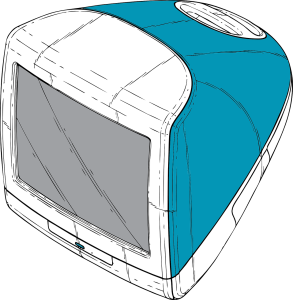 Yes, I’m THAT guy.) In doing that, I found an email I sent to myself, from my work email, sent on Jan. 31, 2008. Subject line: “Blogging.”
Yes, I’m THAT guy.) In doing that, I found an email I sent to myself, from my work email, sent on Jan. 31, 2008. Subject line: “Blogging.”